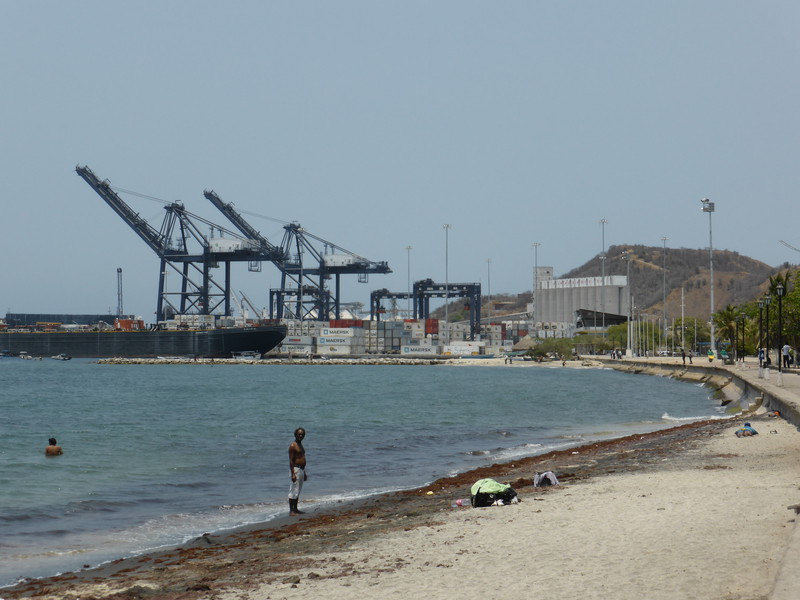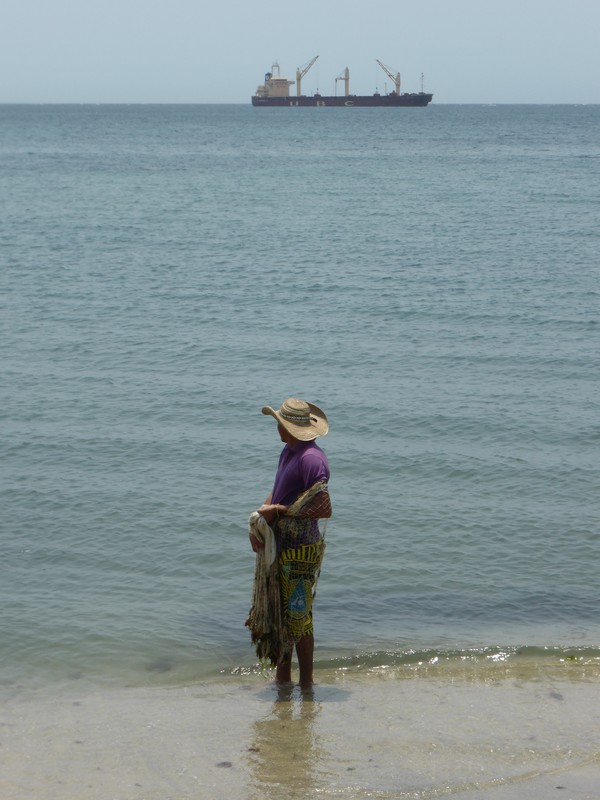
Santa Marta is a four-hour bus ride along the coast from Cartagena, and like its colonial neighbour to the west, it's a city of two halves. This time, though, the earthy part is a lot more visible, and it makes for an interesting mix.
Most travellers shoot straight through Santa Marta and head on to the backpacker Mecca of Taganga, just 7km to the north, so Santa Marta is more of a playground for Colombian holidaymakers. The southern half of town is cosmopolitan and has some pleasant shaded plazas with expensive restaurants and bars, and there's a marina full of gleaming yachts, a small crescent-shaped beach, and a pedestrian-friendly waterfront from which you can enjoy the sun setting into the Caribbean Sea. On paper, it's great.

It's still great in practice, but perhaps not for the reasons you'll see in the brochure, because while the southern half of town is a great spot, the northern half is a great eyesore, and simply turning your head in that direction is a lesson in why estate agents are always banging on about location, location, location. For while there's a sandy beach along the southern end of the waterfront, there's a massive sea port along the northern end, where monstrous container ships drop anchor and load up their cargo under the mechanical gaze of huge cranes and towering storage silos.

Even if you try to ignore the industrial side of town and keep your eyes dead ahead on the gentle surf of the holiday beach, the side effects of the port are hard to miss. On the surface, the beach appears to be a pleasant crescent where local holidaymakers happily swim, but if you look more carefully, there's a strange stain along the high-tide mark that looks suspiciously like an industrial by-product, and the seaweed that clogs the first couple of metres of sea is dark, red and almost algae-like in its sludgy character. The water is murky and has a slightly green tinge to it, and there's a distinctive and familiar smell of rotting organic matter that wafts along the breeze from cracks in the promenade.

But despite this slightly unfortunate clash of beauty and beast, Santa Marta is still a great place to visit. The restaurants are slightly overpriced and, as with so many places in this part of the world, you shouldn't choose to arrive on a Monday, as everything seems to close, but the people-watching is unsurpassed and there are plenty of bars and restaurants where you can simply sink into a beer and watch the world amble by. It's as hot as hell here, just as it is in Cartagena, but that's all part of the experience; this is Colombia and Santa Marta is a Colombian city, and for that alone it's an easy place to like.